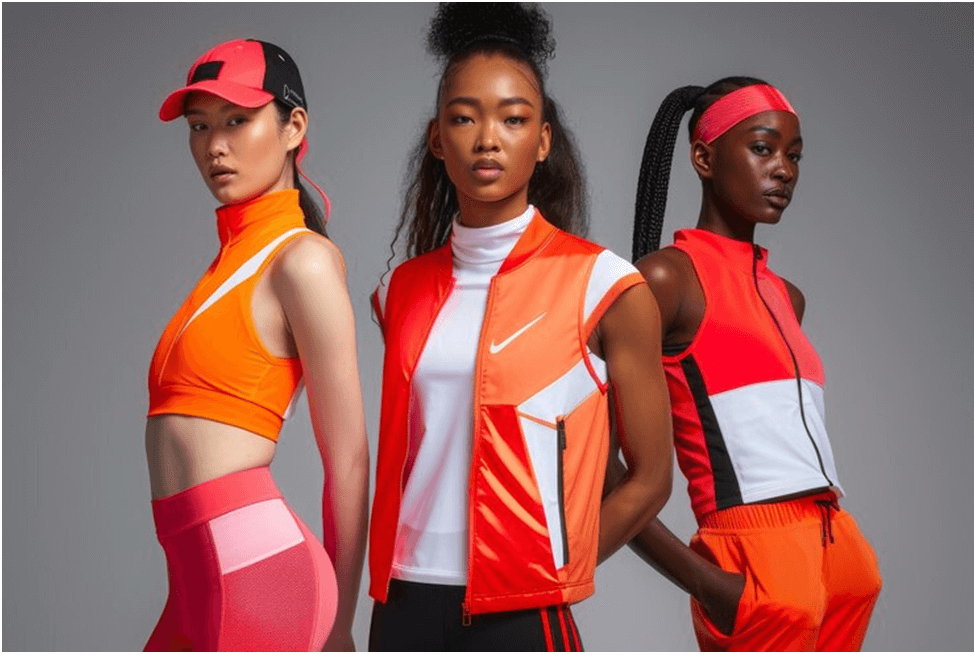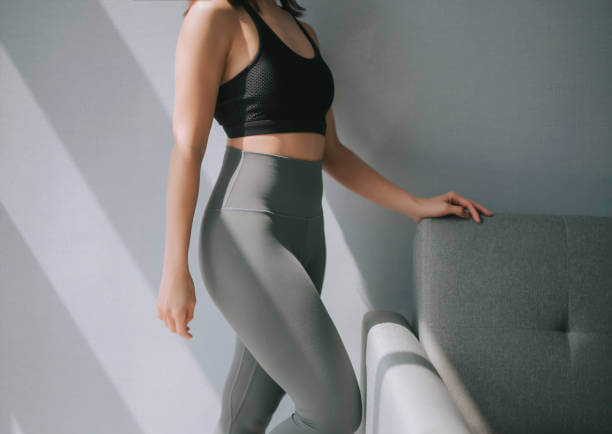
Sportswear Evolution, from Functional to Fashion
Sportswear has undergone a transformative evolution in recent years, merging cutting-edge technology with innovative design to create apparel that enhances performance and style. As the industry continues to evolve, understanding the key elements defining this fusion of innovation and style is essential for both consumers and designers.
Historical Transformation of Sportswear

Sportswear has evolved significantly, driven by societal changes, technological advancements, and shifting consumer preferences. Initially, sportswear prioritized functionality over aesthetics, often utilizing heavy materials like wool that restricted movement and breathability.
The mid-20th century brought a turning point by introducing synthetic fibers like nylon and polyester, which offer flexibility, durability, and moisture-wicking capabilities. These advancements also allowed sports merchandise, such as personalized football attires, to become more prevalent and comfortable.
Advanced textile technologies such as Gore-Tex and Lycra further revolutionized the industry, introducing breathable, stretchable, and waterproof fabrics. This progression was driven by research into biomechanics and athletes’ physiological needs.
The 21st century has seen the merging of fashion and technology, with wearable devices like fitness trackers becoming mainstream. Athleisure, which fuses athletic and casual wear, now dominates everyday wardrobes.
Sustainability has also gained prominence, with brands adopting eco-friendly materials and production methods to meet consumer demand. Recycled fabrics and biodegradable fibers reflect the fashion industry’s growing environmental focus.
Today, sports fashion strikes a balance between style, performance, and sustainability, transforming what was once purely functional attire into versatile, high-performance apparel for diverse lifestyles.
Innovation in Sports Fashion

As the industry continues to evolve, the pursuit of innovation remains a driving force, pushing the boundaries of what is possible in sports fashion. Innovation in sports fashion combines the following key elements
- Cutting-edge textiles: Advanced materials such as moisture-wicking, breathable, and temperature-regulating fabrics enhance comfort and performance.
- Functional design: Focuses on ergonomic tailoring, reducing chafing, adding ventilation, and incorporating compression elements to improve movement and performance.
- Technological Integration: Transforms sports fashion with smart textiles that monitor physiological data like heart rate and muscle activity.
- Comfort First: No matter how stylish or innovative your sports gear is, ensure that it is comfortable. Ill-fitting or uncomfortable attire can hamper performance and cause health issues in the long run. Comfort should be a top priority when choosing sports apparel.
Innovation and Tech Infusion in Sportswear

Smart fabrics are embedded with electronic components or possess inherent properties that allow them to interact with the environment or the wearer’s body. Integrating smart fabrics into sportswear provides the following benefits to athletes:
- Monitor Physiological Parameters
Smart fabrics can be equipped with sensors that track metrics such as heart rate, body temperature, and muscle activity. This real-time data collection allows athletes to adjust their training regimens based on precise feedback, thereby improving efficiency and reducing the risk of injury.
For instance, a smart shirt with embedded electrocardiogram (ECG) sensors can provide continuous heart rate monitoring, enabling athletes to maintain optimal cardiovascular performance during training sessions.
- Comfort and Adaptability
Smart fabrics can enhance comfort and adaptability through their responsive properties. Thermoregulation is a key feature, where the fabric can adjust its thermal conductivity based on the external temperature or the wearer’s body heat. For example, phase-change materials (PCMs) integrated into the fabric can absorb, store, and release heat, providing a dynamic thermal balance.
- Moisture management
Smart fabrics can wick moisture away from the skin more effectively than traditional materials, keeping the athlete dry and reducing the risk of chafing and discomfort.
Advanced moisture-wicking technologies often involve the use of hydrophilic and hydrophobic fibers that create a capillary action, drawing sweat away from the body and dispersing it across the fabric surface for rapid evaporation.
- Compression
Smart fabrics can incorporate compression technology, which has been shown to improve circulation and reduce muscle fatigue.
By applying graduated pressure to specific areas of the body, these fabrics can enhance blood flow and support muscle recovery. This is particularly beneficial for endurance athletes who require sustained performance over extended periods.
Personalizing Sports Fashion Style
Individuals can personalize their sports fashion style by integrating elements that reflect their unique preferences and lifestyles while maintaining the functional aspects of sportswear. Various strategies can be used to achieve personalization in sports fashion, each contributing to a distinct and individualized appearance. These include:
- Customization Options
Many sportswear brands offer customization services that allow consumers to select colors and patterns and dd personalized text or logos to their apparel. This level of customization enables individuals to create garments that align with their personal aesthetic and team affiliations.
- Mixing and Matching
By combining different pieces of sports apparel with casual or formal clothing, individuals can create versatile outfits that transition seamlessly from athletic activities to everyday wear. For example, pairing a performance jacket with jeans or a sports bra with a blazer can create a balanced, functional, and stylish look.
- Incorporating Accessories
Accessories such as hats, wristbands, and bags can enhance a sports outfit by adding layers of style and functionality. These items not only serve practical purposes but also allow for the expression of personal taste. Selecting accessories in complementary colors or unique designs can further personalize an ensemble.
- Utilizing Technology
Wearable technology, such as smartwatches and fitness trackers, can be integrated into sports fashion to increase physical activity and a modern aesthetic. These devices often come with customizable bands and interfaces, allowing users to tailor their appearance to match their personal style.
Future of Sports Fashion

As we look forward, the sports fashion industry holds a promising and exciting future. Merging smart fabrics and artificial intelligence, sportswear is moving towards being even more personalized and technologically advanced.
Imagine clothing that can adapt to weather changes, measure the body’s hydration level, or even produce energy for powering small devices. These innovations could give athletes detailed insights into their performance and health parameters, allowing them to maximize their potential.
Furthermore, as environmental degradation’s specter looms, we could see an even more pronounced emphasis on sustainability in sports fashion. New materials, ethical manufacturing methods, and recycling initiatives could take center stage, making sportswear greener. These initiatives could help the fashion industry contribute to the global effort to mitigate climate change.
Evolving Sports Fashion, Powering Athletic Performance
Game-changing sports fashion represents a dynamic intersection of innovation, technology, sustainability, and style. The evolution of sports apparel is marked by significant advancements in materials and design, driven by technological integration and a growing emphasis on environmental responsibility.







